A bad u-joint can cause vibrations, noises, and handling issues in your vehicle. But how long can you safely drive with a faulty u-joint before it becomes dangerous and causes more damage?
In this comprehensive guide, we’ll discuss what u-joints do, symptoms of bad u-joints, how long you can drive with bad u-joints, when to replace u-joints, and frequently asked questions about driving with faulty u-joints. Keep reading to learn everything you need to know about u-joints and driving with bad ones.
What Does a U-Joint Do in a Vehicle?
U-joints, or universal joints, are an important part of your vehicle’s drivetrain. They connect the driveshaft to the rear differential, allowing the transfer of power from the transmission to the rear wheels while accommodating changes in angle and distance between the components.
Specifically, u-joints allow the driveshaft to operate smoothly even when it’s not in perfect alignment with the transmission and differential. As the suspension moves up and down, the driveshaft moves too. U-joints have bearing caps that pivot, allowing the driveshaft to flex while still transmitting torque.
Without properly functioning u-joints, the driveshaft would bind up anytime the vehicle suspension compressed or extended. U-joints essentially act like flexible couplers between the drivetrain components. They allow the necessary movement while maintaining a solid connection for power transfer.
U-joints are subject to high stress, torque, and constant movement. Over time, the u-joint bearings can wear out. Dirt and debris can also contaminate the joints. This causes looseness or play in the u-joints and can lead to vibration and failure. Catching deteriorated u-joint issues early is important to avoid more extensive drivetrain damage.
Symptoms of a Bad U-Joint
There are a few key symptoms that can alert you to potentially bad u-joints:
Vibration at High Speeds – If you notice vibration, especially around 50-60 mph, this can indicate worn u-joint bearings. The looseness allows drivetrain components to move erratically. Clunking Noises Over Bumps – Worn u-joints may clunk or click when going over bumps. The looseness allows components to move abruptly.
Grease Leaking – Look for grease splattered on the underside of the vehicle near the driveshaft and u-joints. Leaking grease indicates seal wear. Shuddering Acceleration – Does your vehicle shudder or vibrate when speeding up or slowing down? Faulty u-joints can make smooth acceleration difficult.
Difficulty Turning – Worn u-joints put extra stress on the steering system which can cause stiffness or resistance when turning the wheel. Check Engine Light – The computer may detect vibrations and issue an engine code if u-joints are extremely worn.
The most common signs are vibrations that get worse with speed and clunking/clicking when going over uneven surfaces. Listen and feel for any unusual vibrations, noises, or sensations that may point to worn u-joint bearings.
How Long Can You Drive With Bad U-Joints?
Driving with worn or damaged u-joints is risky. The specific time frame depends on the severity of the damage. Here are some general guidelines:
With early stage wear – You may be able to safely drive for several months or longer in some cases. Monitor symptoms and have a shop inspect regularly. Replace once significant play, clicking, or vibration develops. With moderate wear – Drive only short distances as needed until repairs can be made.
The u-joints are compromised and could fail completely at any time. Limit mileage to prevent secondary damage. With severe wear – Do not drive the vehicle. The u-joint is highly likely to fail suddenly. A broken u-joint can damage other drivetrain components. Tow the vehicle to a repair shop.
With a broken u-joint – Immediately stop driving if a u-joint breaks. A single broken joint can be driven short distances at low speeds if necessary. But get it fixed right away. Never drive normal speeds or distances on a broken u-joint. The risks include the u-joint completely locking up and binding the driveshaft.
This would lead to serious transmission and differential damage. Once worn or damaged, u-joints quickly degrade further with use. Take proactive steps once you suspect bad u-joints. The sooner you can get them replaced, the better.
When Should You Replace Bad U-Joints?
Here are some guidelines for when to replace worn or damaged u-joints:
If you hear clicking or clunking when driving over bumps – This indicates significant bearing wear. Replacement should be done immediately to prevent further damage. If vibration occurs above 50 mph – U-joint wear is likely causing driveline harmonics. Replacement is needed to smooth out performance. If grease is leaking – Leaks mean the seals are compromised and further wear will occur.
Don’t wait for complete failure. If engine codes are present – Diagnostic trouble codes related to vibration indicate the computer detects issues. Address faulty u-joints. If annually inspecting – Most mechanics recommend proactively replacing u-joints once they are beyond manufacturer specified wear tolerances, even if no symptoms are present yet.
If installing a new driveshaft – Always replace the u-joints when removing and installing a new driveshaft. Old u-joints should never be reused. If uncertain of maintenance history – Sticking to recommended service intervals is ideal.
But if you purchased a used vehicle and are unsure of the status of the u-joints, consider having them replaced as regular maintenance. Catching bad u-joints early and replacing them promptly is critical to avoid secondary damage to other drivetrain and suspension components.
Replacement is relatively affordable when done just for preventive maintenance. Compare that cost to transmission repairs if damaged by failed u-joints.
Can You Have Just One Bad U-Joint?
Vehicles typically have at least two u-joints – one at each end of the driveshaft. Some four-wheel drive vehicles can have a third u-joint in the additional driveshaft running to the front axle. Is it possible for only one u-joint at a time to fail?
The short answer is yes, it’s possible for a single u-joint to become worn and require replacement by itself. However, there are a few caveats:
The other u-joint(s) are likely deteriorated too – If one u-joint is worn out, similar age and mileage means the others are also nearing the end of their lifespan. They should be inspected and rebuilt or replaced at the same time if needed.
The bad one will put more stress on the remaining u-joints – A single worn u-joint forces the others to compensate. This accelerates wear. It’s best to replace them all at once. Driveline unbalance can still occur with only one bad u-joint – Even a single compromised u-joint allows some driveline vibration and harmonics.
Replacing just one may help but won’t solve the issue completely in some cases. Technicians recommend doing both sides at once – Most mechanics will strongly suggest replacing all u-joints during a repair rather than only the visibly bad one. This prevents comebacks for future u-joint failures later on.
While possible to only replace one at a time, you’ll get the smoothest operation, prevent accelerated wear, and minimize labor costs by having both (or all) u-joints done at the same time. Coordinate with your repair shop on the best approach when dealing with a bad u-joint.
How Much Does U-Joint Replacement Cost?
U-joint replacement costs aren’t too steep compared to many other auto repairs. Here are some typical u-joint replacement costs:
Parts – The u-joints themselves will range from $20-50 each for domestic vehicles. For import vehicles, u-joints may cost $50-150 apiece. The driveshaft center bearing is often replaced at the same time, adding $20-60. So plan around $100-300 for parts.
Labor – Book time for light truck u-joint replacement can range 2-5 hours depending on the vehicle. At $100 per hour shop rate, that’s $200-500 in labor. For all-wheel drive SUVs, expect 5-9 hours’ labor for front and rear driveshaft u-joints.
Total estimate – The total bill to have a shop replace your bad u-joint(s) will generally land somewhere between $300 and $800 in most cases. Domestic trucks on the low end, up to AWD SUVs on the high end.
DIY cost – Do-it-yourselfers can save on labor by doing the work themselves. Parts will run around $100-200 depending on the vehicle. With some basic tools and mechanical skill, you can replace u-joints in your driveway for well under $300.
Keep in mind if you only do one u-joint, you’ll eventually have the additional labor cost down the road when the other side fails. That’s why it’s almost always recommended to do both sides at once when you have the work done. Discuss options with your repair shop to get the best value on your u-joint repair.
Can a Mechanic Tell if a U-Joint is Bad?
Trained technicians can diagnose bad u-joints through a few different checks:
Visual Inspection – The mechanic will look for obvious looseness in the driveshaft, signs of grease leaking from the u-joints, missing or broken caps, and any debris buildup in the joints. Loose, damaged, or severely worn components indicate u-joint failure.
Vibration Testing – By running the vehicle at highway speeds, technicians can feel, listen, and visually observe any unusual vibrations that point to u-joint deterioration. The type and location of vibration provides clues as to which joint is bad.
Play Detection – The vehicle is put on a lift so the mechanic can grab the driveshaft and check for up-down and side-to-side looseness at each u-joint. Too much play signifies compromised joint integrity.
Noise Assessment – Technicians will drive the vehicle and listen for any clicking, popping, or clunking noises during acceleration, deceleration, and over bumps. These noises can help pinpoint damaged u-joint locations.
Angle Measurement – Adjusting suspension components can reveal the operating angle of the u-joints. Excessive operating angles accelerate wear and indicate the need for u-joint replacement.
A good mechanic will utilize multiple checks to systematically diagnose the condition of the u-joints. While test driving, they can feel, see, and hear if the u-joints are bad. And u-joint inspection should be part of any complete undercar evaluation. This helps catch issues before they lead to major breakdowns.
Should U-Joints be Replaced in Pairs?
It’s highly recommended that u-joints always be replaced in pairs (both sides) even if only one is exhibiting symptoms of failure. Here are 5 key reasons why:
The other u-joint is likely worn also – If one side is bad, similar components on the other side are usually not far behind. Replacing only one can cause driveline imbalance – A single new u-joint paired with an old worn one can actually worsen vibrations.
It prevents accelerated wear after replacement – A new u-joint alongside an old one has more stress and will fail faster. Labor costs are doubled to do one at a time – Paying for removal/install twice costs more than both sides at once.
Comeback warranty issues are avoided – Technicians avoid the risk of customers coming back with a failed u-joint soon after thinking only one needed replacement initially. For do-it-yourselfers, the simple rule of thumb is that you should always replace all u-joints at the same time. Don’t reuse old ones.
And inspect the center support bearing as well. This ensures smooth operation and maximizes the lifespan of the new components. Your best bet is to replace everything in pairs.
Is it Safe to Drive with a Broken U-Joint?
A broken u-joint is highly unsafe to drive normally and can lead to serious damage. Here are the risks of driving with a broken u-joint and precautions to take:
The driveshaft can detach – This will completely disable propulsion to the wheels. You’ll coast to a stop, unable to accelerate. Other driveline damage – The violent separation of a broken u-joint can damage yokes, slip shafts, and differentials. Missing chunks of u-joint can jam components.
Further component failure – Broken pieces tend to damage other parts. The initial failure may cascade to universal or CV joint issues. Loss of control – Driveshaft separation while driving risks locking up the wheels and interfering with steering, braking, and handling. If a u-joint breaks while driving:
Pull over immediately (if possible) – Get the vehicle stopped ASAP to prevent additional damage. Flatbed tow recommended – Preferably have the vehicle towed to avoid risk of driveshaft detachment while in motion.
Low speeds only if towing isn’t feasible – If you must limp home or to a shop, keep speeds under 25 mph to reduce risk. Ideally, have a broken u-joint repaired before attempting to drive the vehicle again. Emergency low speed driving should only be done with great caution. The safest bet is to stop driving immediately and have your vehicle towed for u-joint repairs.
How Are U-Joints Inspected and Replaced?
U-joint inspection and replacement involves a few key steps:
Inspection:
Technicians look for looseness, clicking/clunking noises, and vibration during test drives to diagnose bad u-joints. The driveshaft is visually examined for grease leaks, worn caps, and excessive play indicating wear. Using pry bars, mechanics check for up-down and side-to-side looseness at each u-joint. Operating angles are checked to make sure they are within specifications. Replacement:
Wheels are chocked and parking brakes set to prevent vehicle movement. The driveshaft is disconnected from the transmission and differential to be removed. Old u-joint retaining clips and straps are removed and the u-joints pressed out using a bench vise. The new u-joints halves are aligned and pressed into the yokes or slip shafts.
Retaining clamps and straps are installed to hold the new u-joints in place securely. The driveshaft is reinstalled, reconnected, and fasteners torqued to spec. The mechanic test drives the vehicle to confirm normal vibration-free operation.
Proper inspection, removal, installation, and torquing procedures must be followed to prevent new u-joint failure. Replacing these components takes some mechanical skill and experience to do correctly. Most DIYers are advised to leave u-joint work to professional technicians.
Do Bad U-Joints Make Noise When Turning?
Damaged, worn out u-joints can make noticeable noises when turning the steering wheel left or right. Here’s why:
Looseness allows clicking/clunking over bumps – Excessive play means the compromised u-joint caps and bearings clatter as they rock over road bumps during turns. Joints are under more torque – U-joints operate at higher angles during steering. Bad ones are more prone to chatter and vibration under torque.
More load on CV joints – Bad u-joints place extra stress on CV joints which may then click when turning due to excessive wear. Transmission winding up – Noise can occur from the transmission and differential as they bind up due to misalignment from damaged u-joints.
Unbalanced driveshaft – Worn u-joints set up harmonics and vibrations that become more pronounced during turns. While a smooth, steady turn won’t generate noise in bad u-joints, the combination of bumps, acceleration, body lean, and suspension compression involved in turns agitates the compromised joints.
Think of how your vehicle may hit a bump mid-turn – this jars the unstable u-joints into making noise.
Clunks, chatter, or whining during left or right turns is a clear warning sign of worn u-joints. Have a mechanic inspect the joints and driveshaft to restore proper operation and reduce friction and damage to other components caused by sloppy u-joints.
Can a Bad U-Joint Cause Vibration at Specific Speeds?
Absolutely. Bad u-joints are a very common source of speed-specific vibration issues. Here’s why they can cause vibration at certain speeds:
Driveshaft imbalance – Damage allows the shaft to flex and bend oddly at certain RPMs causing vibrations. Harmonic vibrations – Like a guitar string, driveline vibrations occur at specific frequencies determined by RPM.
Increased angles under acceleration – More vibration happens when u-joints are operating at higher angles while speeding up. Transmission gear resonant frequencies – Bad u-joints allow problematic vibration in certain gears at particular speeds. Specific problem RPM ranges include:
25-35 mph – 1st order driveline imbalance vibrations 50-60 mph – 2nd order vibrations 75-85 mph – 3rd order harmonics The most common is moderate vibration around 50-60 mph, indicating worn u-joint bearings allowing driveline harmonics. Resonant frequency vibrations usually go away when speeding up or slowing down.
If you feel vibration at very specific speeds, bad u-joints should be suspected right away. Severely worn u-joints put excess stress on mounts, shaft bearings, transmissions, and differentials too. The vibration itself isn’t harmful, but is a symptom of compromised components in need of repair.
Final Through
In summary, it’s risky to drive with bad u-joints as they can fail unexpectedly. Minor wear may allow several months of continued operation, but significant looseness, clicking, or vibration means replacement should be done right away. While it’s possible to replace just one u-joint, it’s strongly advised to always do them in pairs to maintain driveline balance.
Typically you’ll notice increasing vibration, clunks over bumps, and difficulty accelerating and turning as u-joints wear out. Diagnosing and replacing bad u-joints before they break prevents further damage. Have a mechanic thoroughly inspect your u-joints if you notice any unusual symptoms. And be proactive with replacements based on age and mileage.
With most vehicles, u-joint replacement costs are reasonable compared to major transmission repairs that could occur from driving on broken u-joints. Take any noise, vibration, or loss of performance as a warning sign of potentially compromised u-joints.
Addressing them promptly reduces safety risks and preserves your driveline components. Carefully monitoring u-joint condition and adhering to recommended service intervals helps your vehicle provide many miles of smooth, safe, reliable driving.
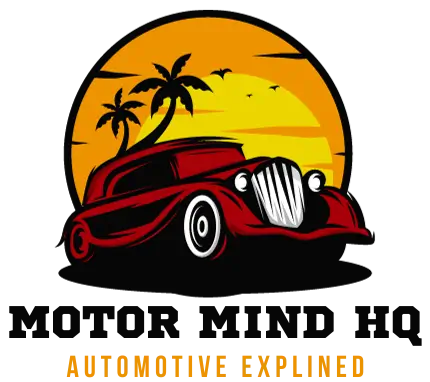
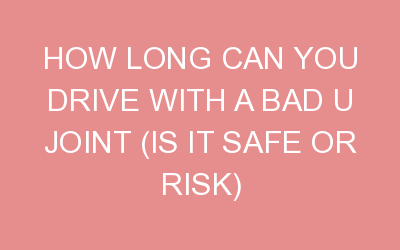
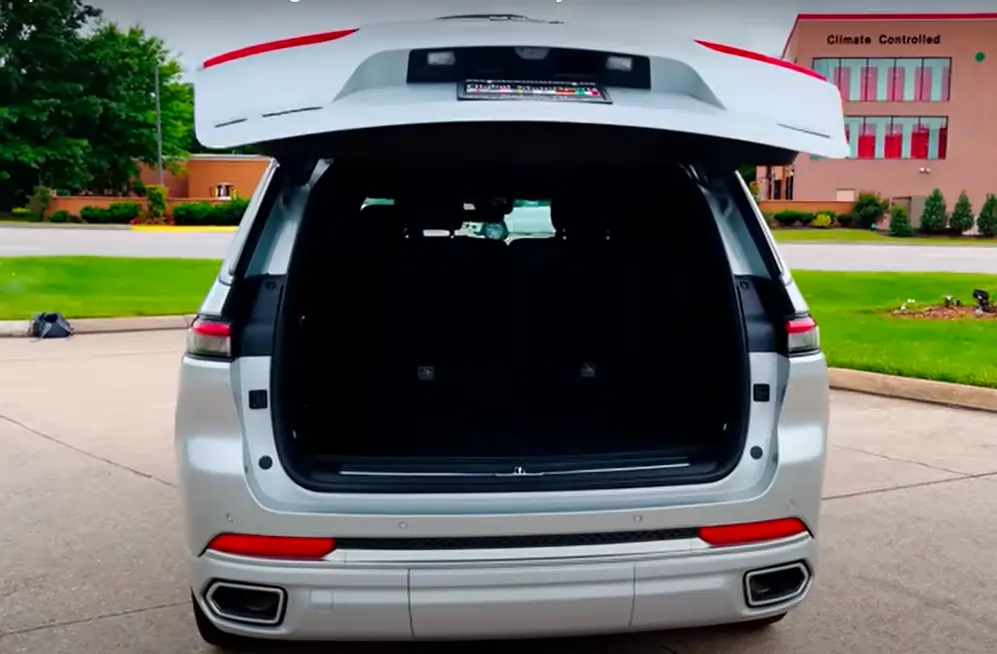
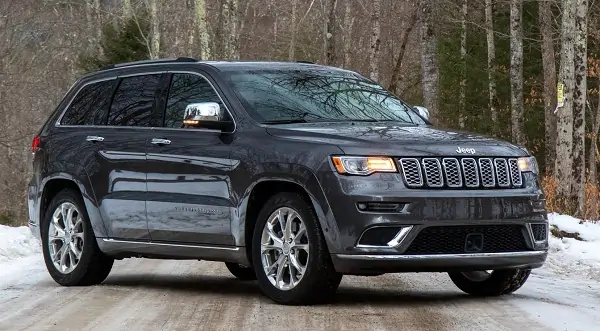

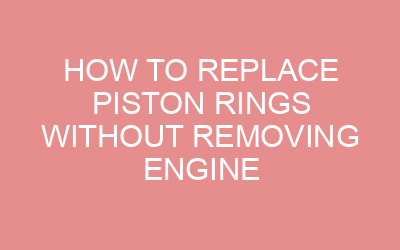
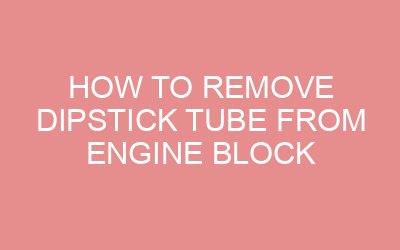
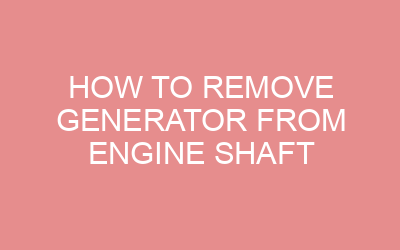
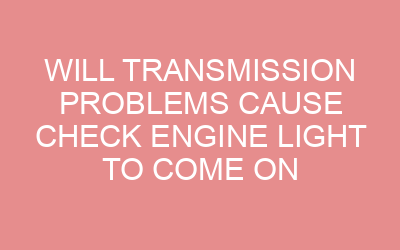
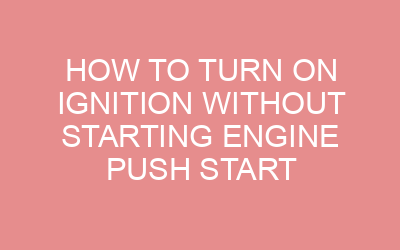
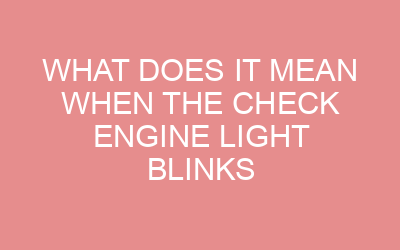
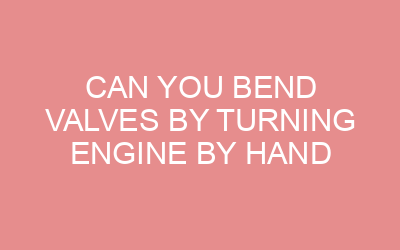


Leave a Reply